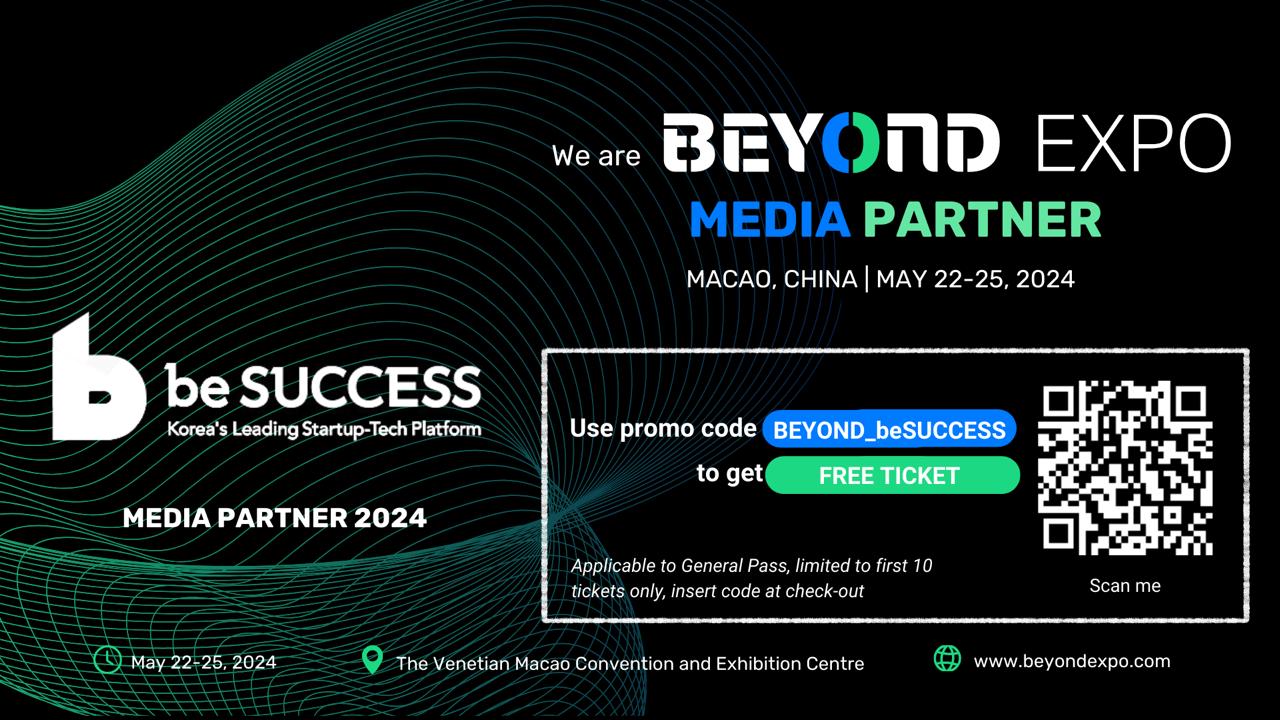AsiaTechDaily – Asia's Leading Tech and Startup Media Platform

NDS Solution’s founder Kim Horatio about building an outstanding company in the digital signage industry
NDS Solution is a software developer company, specialising in digital signage. The company has been in the field for 10 years and received many awards and certifications. It is leading company in Signage market with sales network in 20 countries. Its current focus is to solidify its position in Asia and China markets. NDS solutions founder Kim Horatio shares his thoughts about the digital signage industry, the future for his company and the industry with AsiaTechDaily.
Could you please introduce yourself and your company?
I am Horatio Kim. I am the CEO of NDS solution. Our company NDS means Network Digital Signage. Since its establishment in 2008, we have been doing digital signage business. We have two software first one is a content maintenance software called the Q sign. With Q sign, if there is video, image, texts or website content, you can broadcast and control any display like kiosk, TV, LED, video, etc. We have another software called Q Wayfinder. With Q Wayfinder software, you can create interactive applications for mobile phones and some big-screen kiosks or LED. Q Wayfinder is an interactive touch application authoring software developed seven years ago. In the last seven years, we have done some key projects in Korea and the Middle East, China, Singapore, and the USA. In the previous two years, we have received some R&D money from the Korean, around 700,000 USD. We have now updated the software to make it cloud origin. We are now ready to service globally with our two software. And we also produce interactive kiosks. We can make some interactive indoor kiosks, outdoor kiosks, LED, etc. So we have some hardware solutions and software solutions. So NDS solution is a total digital signage solution provider.
Would you please tell us more about your company’s geographic focus? Which countries do you operate in?
When I started the digital signage business about 13 years ago, we developed Content Management Software designs. Our software would support 15 different languages, including Korean, Chinese, French, German, etc. So when I started, our geographic target market was everywhere. We are now focusing more on the Asian territory and especially the Middle East because our main product line is Q Wayfinder. Google Maps navigation is helpful when you have a cellular connection, but what if you are inside a mall or building where there is poor connectivity and Google isn’t working. Then with our Q Wayfinder software, it becomes easy to navigate. For, e.g., the Middle East is a hot weather country, which has big shopping malls. They need kiosks and displays. So with Q Wayfinder, we are focusing on the Middle East market and Korea, Singapore and China. I think these countries adopt technology more easily than Europe or America. Also, it is expensive in the Western Market as they may use the device, but it is made in Asia. So a kiosk screen may cost 3000 USD in Korea, but a kiosk screen in the USA or Europe will cost 10,000 USD. Hence, we are now focusing on Asian territory, Korea, Singapore, Hong Kong and the Middle East.
Could you tell us how big is your team?
NDS Solution is a small company in size. We have a total of 12 members, a software designer, a software engineer, a graphic designer, two hardware assemblers and three marketing and human resources. Since 13 years, we have been leading in digital signage business. In terms of the digital industry, we are one of the big companies. We have a CMS wearable QA panel, also in software we have kiosks that made in Korea and China. Our target market is not companies like Starbucks or Mcdonald, that need 1000 or 10,000 screens, which maybe market for Samsung or LG. Our target market are buildings, museums, hospitals, banks, airport, etc. We offer multiple services like video, LED, kiosks, etc. We already have over 30 templates in Korea, Middle East, China and Singapore.
Could you tell us about funding received by your company?
Six or seven years ago, the digital signage market was growing, and we were not that big company. We worked on various models, and Q Wayfinder was developed. We are more focusing on interactive applications with Q Wayfinder. We received the 600,000 USD to develop the software in 2012-13. Now we have a Cloud origin that is our main technology for Q Wayfinder. We also received another government R&D project grant of 700,000 USD.
We are using the funds to invest in more R&D resources. So the Q Wayfinder value must now be at least 200,000 USD in the making. In Korea, we have five projects for sectors like autonomous mobile, airport, tourist areas, city halls, etc.
Can you talk about the technology and how it helps your clients?
Q Wayfinder is an interactive application project. We already have voice recognition technology where the AI engine recognises, Korean, English, Arabic, other multilingual pronunciations like the Indian English, German, etc. Then we are using Google API. We are also using Google facial recognition API. So wherever the software is installed, we can give related statistics also, depending on time, date, gender, etc. What time how many people read the content on particular kiosk, etc. We can give that kind of statistics. So Q Wayfinder with the facial recognition, voice recognition is kind of a basic function we supply for kiosks.
Wayfinder can be used, for example, for some shopping malls. They need Q Wayfinder as to develop the software is expensive, you need engineers, designers, etc. The software engineer is most expensive, but we have Q Wayfinder software, then mostly 80% of the job is accomplished. Then the graphic designers, Photoshop, Illustrator, etc., needed, and only some database connection, so maybe printer access or the connection API connection, those kinds of thing 10% to 20%. This is how we supply the software relatively cheaper than another competitor.
Could you tell us a bit more about the funding required for your R&D process?
Our R&D process is quite simple. For our earlier R&D projects, we have received grants from the government. So for the Q Wayfinder, we got 600,000 USD and for its cloud version 700,000 USD. We would love to get around 100,000 USD; then, we can work more on the software. We can hire some design agency or software agency to develop more features, such as voice recognition. We have got government recognition, and now we want to promote the software globally.
What is your company’s strategy for selling the technology to different countries?
Geographically, we have two policies. First is selling only the software. China is one of our target markets. That’s why we have partners there to develop patents in Shanghai, Beijing. In the Middle East, we have already participated in the Dubai GITEX for three years in a row. We have references in the GCC area, Turkey and Istanbul. And our software already supports the Arabic language, Turkish language.
Could you tell us a bit more about your autonomous robot project?
Robots are nowadays used in a very diverse way. But my target market is the hospitality industry. Our target market is airports, hospitals, shopping malls, museums, hotels, tourist places, etc. For, e.g., some tourists or visitors want information like where the toilet is or where the coffee shop is, then the robot can help. We can feed FAQs into the robot-like 100, 300, and it can be a multilingual service. While for kiosks, one needs a specific location, but a robot can move autonomously. So, that is my target market, and we hope to get around 100,000 USD for that. A robot can work 24 hours and for years. We can keep adding more functions to the service.
Could you tell us a bit more about the software features that can help retail clients?
Our service gives features like category searching, floor searching, name searching, etc. It can be used through a touch application, and when there is no touch, the display can have any advertisement screensaver. Now, because of Corona, there are worries about touch applications, so we have voice recognition. And then, we also give facial recognition statistics. When you have kiosks, you don’t know the usage of how many people use them. But we can provide that statistics. Also, some shopping malls, hospitals, airports may need to put up an LED outside, and they may want to control it. We have Q Sign content management software, and then we have Q Wayfinder inside the building to create interactive applications.
How do you plan to grow your network globally?
We have participated in overseas exhibitions for three to four years join overseas exhibitions in China, the USA and Europe. We are a small company, but we have a big network. Whenever we participate in a big exhibition, we promote our product and keep a tab of how the market is changing. So we are lucky as when the digital market changes happen, like when Samsung or LG produce new displays we can easily get the main component LCD panel touch sensor.
What do you see as some of the future trends in the digital signage space?
I think voice recognition technology will be used a lot. Also, there will be more different types of touchscreen kiosks, mobile, etc. In Korea, kiosks are used in a very diverse way. For, e.g., at the airport for ticketing, registering, banking, ATM, café ordering, etc. At a hospital, also, when the doctor is not available, kiosks can be used to register patients, print prescriptions, etc. At the cinema, it can be used to book tickets. Young people are eager to use kiosks as they are more accessible and quicker. For senior citizens, the Korean government has already started making some content educating seniors about different industries, touch applications, use of kiosks in hospitals, cinema, etc. I think the trend will be adopted quickly in Korea, Singapore, Hong Kong than in Europe and the United States.
What is your sales strategy? Can clients test the software beforehand?
We had already developed Q Wayfinder seven years ago. Whenever I go to an exhibition, lots of companies show interest in the software. They want to test it, evaluate it. Now, anytime I don’t have a Cloud version, and when my partner assesses the software, I have to support the installation file. We are not a big company, and so we made a microsite for that purpose. So now my partner can download it and get all our references. And then, when the company shows interest, we share it for trial for two weeks. So that’s the way clients can test the Q Wayfinder through the microsite.
In the digital signage industry, we are a very competitive company. We already have over 30 projects experience. We have CMS software; we have Q Wayfinder; we make kiosks. So it’s a perfect time to expand our market overseas.





